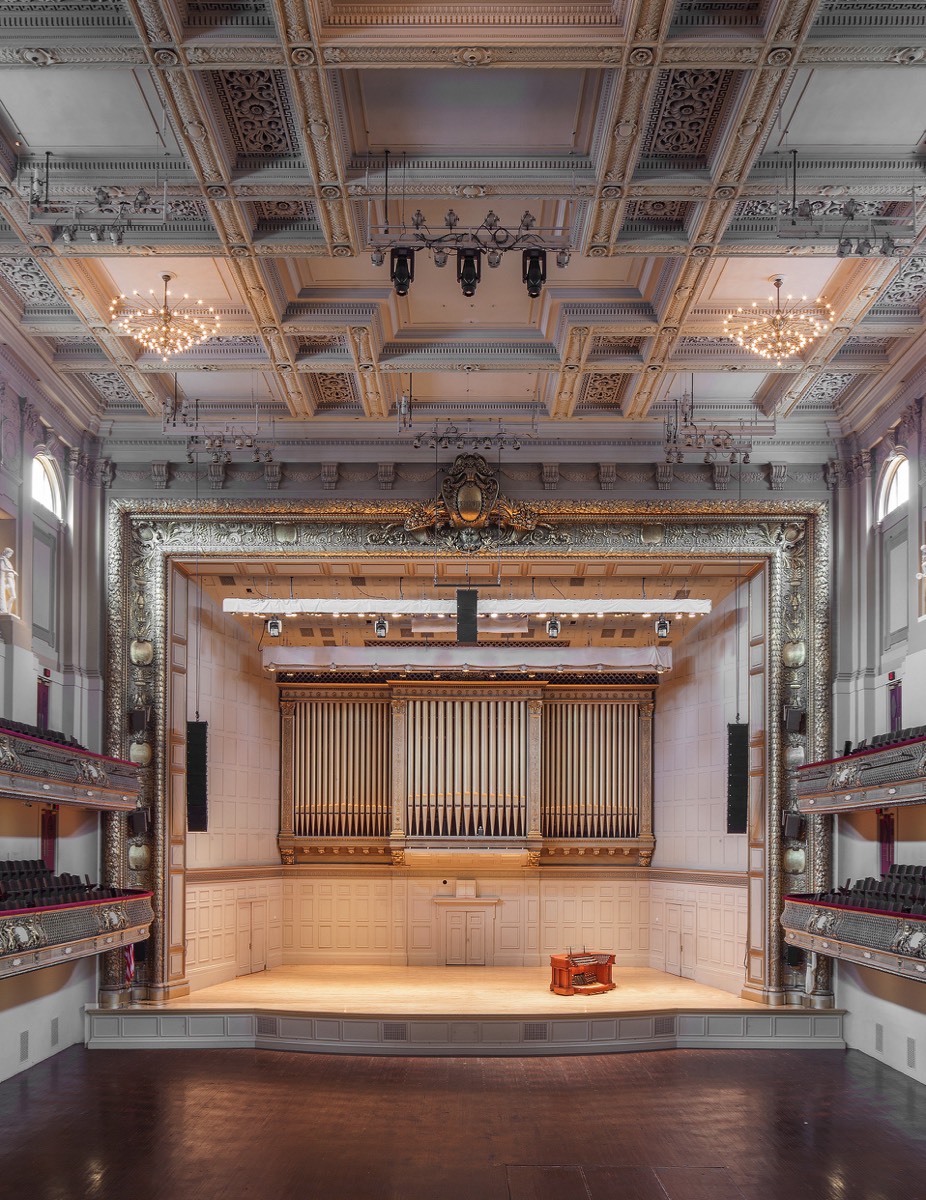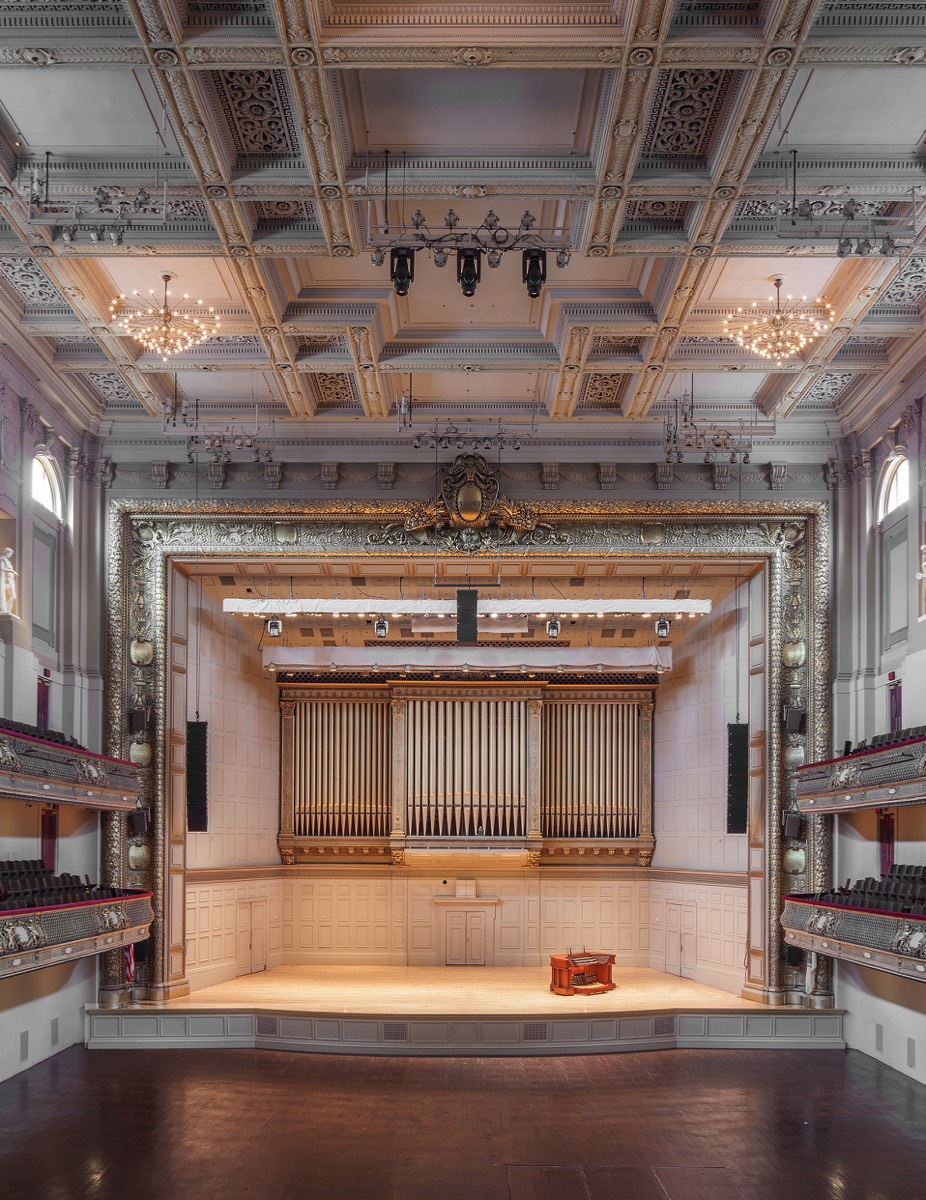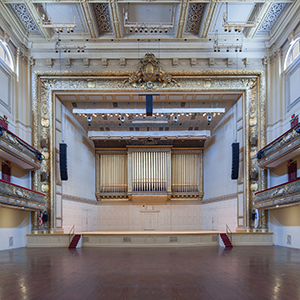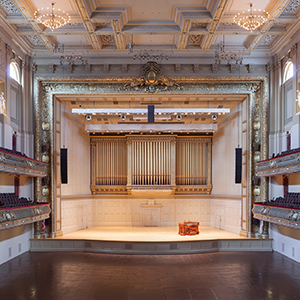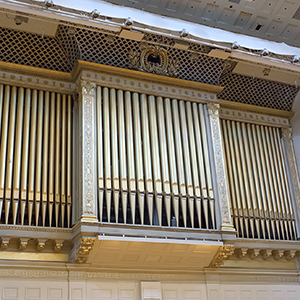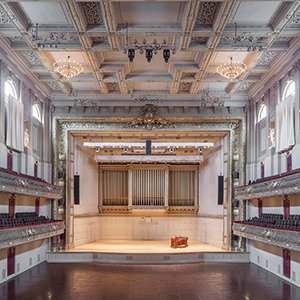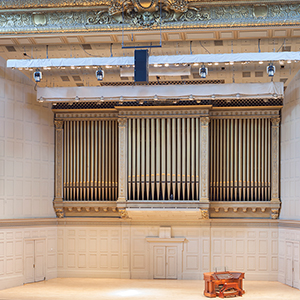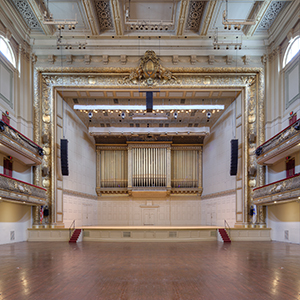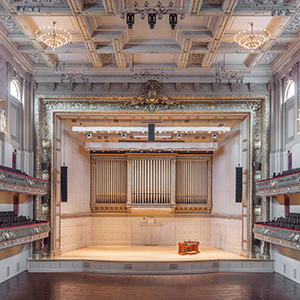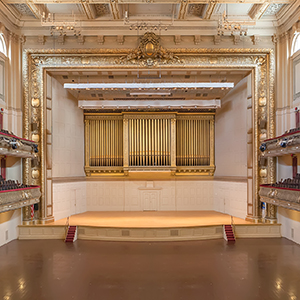The NEO Press - Boston Symphony Hall
About the Boston Symphony Hall Organ
Ask the BSAV Tour Guides; they'll tell you that when groups enter the auditorium and hear the pipe organ playing, they often stand up and cheer. There's something about the sound of a great pipe organ in a hall with world-class acoustics that gets people excited.
No wonder. The organ in Symphony Hall is something to get excited about, for aficionados and newcomers alike. Originally built by George S. Hutchings in 1900, it was rebuilt in 1949 by the Aeolian Skinner Company (under the direction of G. Donald Harrison), and then, in 2004, renovated by the Foley Baker Company.
All three times, it was designed to reflect the pipe-organ style of the day. The Hutchings version was intended only to support the orchestra, mainly with low notes. But the Aeolian-Skinner redo was designed, at the request of then-Symphony organist E. Power Biggs, so that he could play solo works for the organ, such as concertos. Now, with the latest iteration, it's back to supporting the orchestra again.
So what is a pipe organ? In its simplest terms, it consists of three parts: console, pipes, and wind system. The pipes produce sound when the wind system forces air through them and, by pressing keys on the console, the organist determines which pipes sound at a given time.
In the hands (and feet) of the organist, the console you see on the far left during concerts is the command center of the organ. Brand new in 2004, it has three manual keyboards, each with 61 keys (five octaves), and a pedalboard of 32 notes (two-and-a-half octaves). Surrounding the keyboards are stops that let the organist control the voices and timbre (tone color) of the work he is playing. So you might hear cellos and flutes and clarinets and basses and a lot of other instruments, but most of the sounds you hear are strictly pipe organ sounds.
All that glorious sound comes from thousands of pipes-4,314 in the Symphony Hall organ-all but a few of them lined up in a crowded space behind the back wall of the stage. One pipe produces a single pitch and timbre, determined by the length of the pipe. The longer the pipe, the lower the sound. Some pipes are as tall as 32 feet, some are as short as one inch, and the rest are everywhere in between.
The timbre and loudness of a pipe are determined by how it's constructed and voiced, as well as by the wind pressure and volume of air delivered to the pipe. Groups of pipes are organized into ranks, each of which has a common timbre and volume up and down the scale. In the Symphony Hall organ, there are rows and rows of them, 75 ranks in all, and one or more of them can be controlled by a single stop simultaneously.
With a pipe organ, the pipes continue to sound as long as the keys are pressed, unlike a piano, whose sound begins to decay immediately after a key is struck. That's because the organ has a continuous supply of wind.
So where does the wind come from? In the distant past, it came from human-powered bellows, but the Symphony Hall organ has always used electric blowers to do the job. The blowers' wind ducts, as much as a foot and a half in diameter, climb like a giant octopus from the basement all the way up to the first balcony to pump air into the pipes.
Next time you're in Symphony Hall, take another look at that row of tall pipes looming over the orchestra. It would be easy to think that they're just there because they look nice, and they do, but all except three are actually working pipes. Then notice the grill above them. Decorative, yes, but infinitely more important, it's what lets that exciting organ sound into the hall.
No wonder. The organ in Symphony Hall is something to get excited about, for aficionados and newcomers alike. Originally built by George S. Hutchings in 1900, it was rebuilt in 1949 by the Aeolian Skinner Company (under the direction of G. Donald Harrison), and then, in 2004, renovated by the Foley Baker Company.
All three times, it was designed to reflect the pipe-organ style of the day. The Hutchings version was intended only to support the orchestra, mainly with low notes. But the Aeolian-Skinner redo was designed, at the request of then-Symphony organist E. Power Biggs, so that he could play solo works for the organ, such as concertos. Now, with the latest iteration, it's back to supporting the orchestra again.
So what is a pipe organ? In its simplest terms, it consists of three parts: console, pipes, and wind system. The pipes produce sound when the wind system forces air through them and, by pressing keys on the console, the organist determines which pipes sound at a given time.
In the hands (and feet) of the organist, the console you see on the far left during concerts is the command center of the organ. Brand new in 2004, it has three manual keyboards, each with 61 keys (five octaves), and a pedalboard of 32 notes (two-and-a-half octaves). Surrounding the keyboards are stops that let the organist control the voices and timbre (tone color) of the work he is playing. So you might hear cellos and flutes and clarinets and basses and a lot of other instruments, but most of the sounds you hear are strictly pipe organ sounds.
All that glorious sound comes from thousands of pipes-4,314 in the Symphony Hall organ-all but a few of them lined up in a crowded space behind the back wall of the stage. One pipe produces a single pitch and timbre, determined by the length of the pipe. The longer the pipe, the lower the sound. Some pipes are as tall as 32 feet, some are as short as one inch, and the rest are everywhere in between.
The timbre and loudness of a pipe are determined by how it's constructed and voiced, as well as by the wind pressure and volume of air delivered to the pipe. Groups of pipes are organized into ranks, each of which has a common timbre and volume up and down the scale. In the Symphony Hall organ, there are rows and rows of them, 75 ranks in all, and one or more of them can be controlled by a single stop simultaneously.
With a pipe organ, the pipes continue to sound as long as the keys are pressed, unlike a piano, whose sound begins to decay immediately after a key is struck. That's because the organ has a continuous supply of wind.
So where does the wind come from? In the distant past, it came from human-powered bellows, but the Symphony Hall organ has always used electric blowers to do the job. The blowers' wind ducts, as much as a foot and a half in diameter, climb like a giant octopus from the basement all the way up to the first balcony to pump air into the pipes.
Next time you're in Symphony Hall, take another look at that row of tall pipes looming over the orchestra. It would be easy to think that they're just there because they look nice, and they do, but all except three are actually working pipes. Then notice the grill above them. Decorative, yes, but infinitely more important, it's what lets that exciting organ sound into the hall.
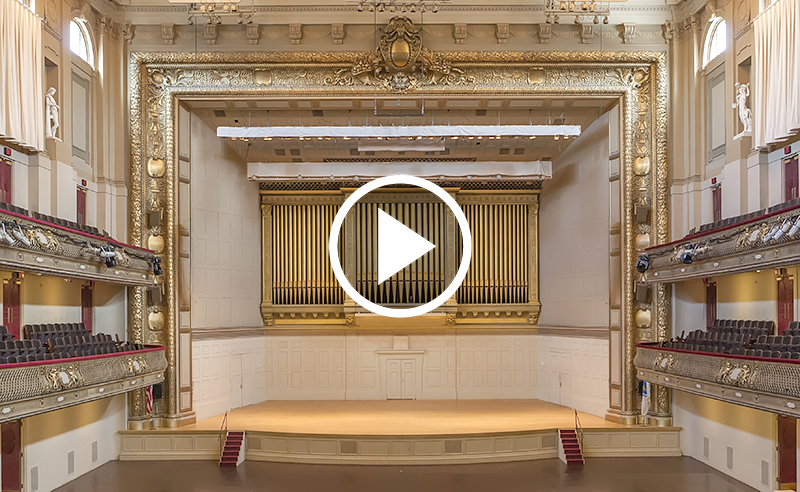
Olivier Latry, Organ
Excerpts of "Ascending Light" by Michael Gandolfi
Excerpts of "Ascending Light" by Michael Gandolfi
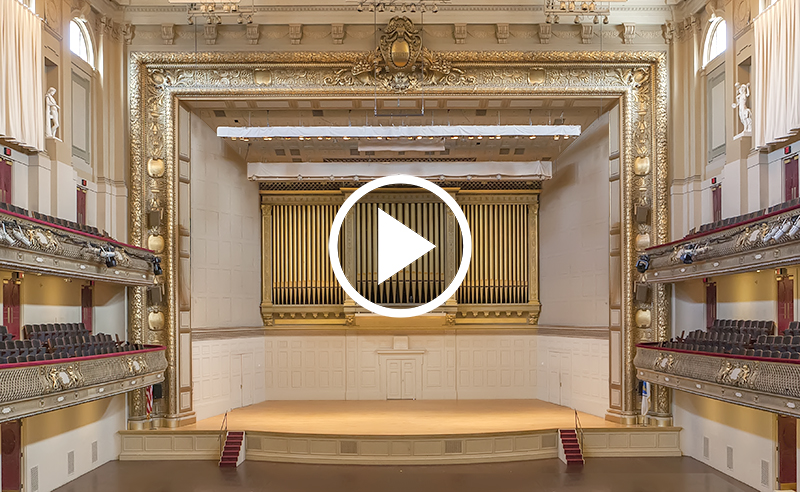
On Wednesday, July 1 at 8 p.m. The New Philharmonia performed an exhilarating program of French organ music with world renowned organ virtuoso, James David Christie. This special program was a part of the American Guild of Organists 2009 Boston convention.

